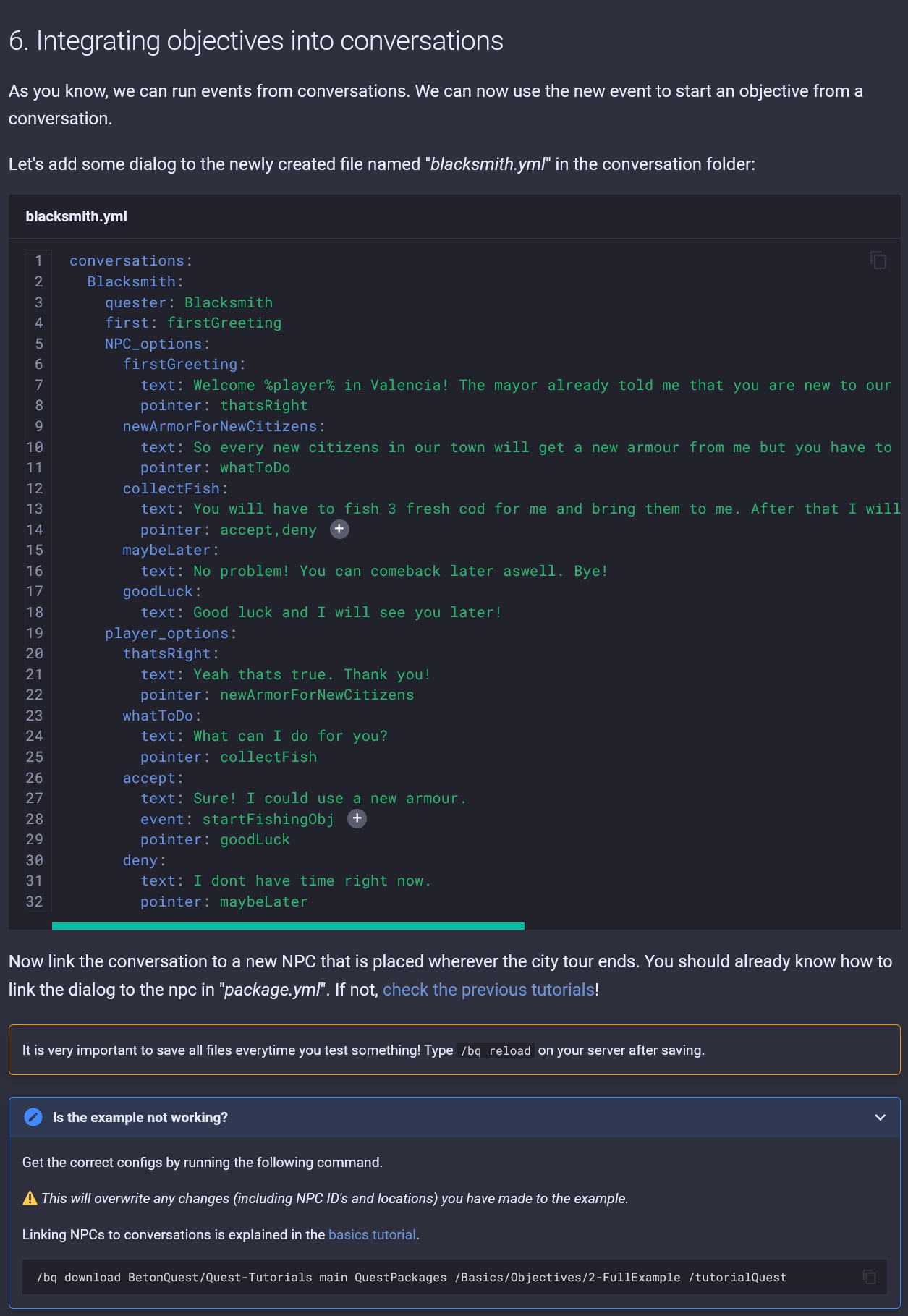Writing Tutorials🔗
All tutorials must follow this structure. An example for a tutorial series, that conforms to this standard, can be found in our documentation.
Whenever the tutorial refers to downloadable examples, the /bq download feature is meant.
It downloads quest from our Quest Tutorials repository.
Tutorial Structure🔗
Intro🔗
- Goal of this tutorial (What is the feature?)
- Requirements
- Skills from previous tutorials
- Installed plugins
- A (downloadable) setup
- Related docs (documentation of the covered features)
Example

Content🔗
It's recommended to split a tutorial into mulitple logical steps. Ideally, once a step has been completed by the user, they should be able to try it out ingame. A step consists of:
- Goal / What and why are we going to do?
- Instruction / How to do it?
- Explanation / How does the config / feature work? This is tightly coupled with the instruction, e.g. using code block annotations.
- (Optional) Downloadable Sample Solution / What to do if it does not work?
Sometimes it may not be practical to provide a downloadable solution for every step. Since these downloadable solutions should always contain the progress from previous steps, they can also be provided in a later step.
Example

Outro🔗
- Downloadable Sample Solution for the entire setup
- Summary on what the user learned
- Where to find more information about this feature (Reference & Backlinks, may overlap with the intro's "Related Docs")
- What's next? (Only needed if in a tutorial series)
Example

Download Commands🔗
Whenever you want to provide a downloadable example, you can use the /bq download command.
But when you do, always replace the git reference with the placeholder ${ref}.
This would then look like this:
/bq download BetonQuest/Quest-Tutorials 0a587838ea52c57efd07ca3a74e45651b5ff87e9 QuestPackages /Basics/Conversations/1-DirectoryStructure /tutorialQuest overwrite